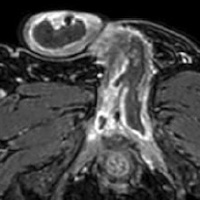Fatal infections in andrology. Atypical clinical presentation of a Fournier’s disease

Accepted: March 27, 2020
All claims expressed in this article are solely those of the authors and do not necessarily represent those of their affiliated organizations, or those of the publisher, the editors and the reviewers. Any product that may be evaluated in this article or claim that may be made by its manufacturer is not guaranteed or endorsed by the publisher.
Authors
Background: Fournier disease (FD) is a worrisome infection of genital area caused by a polimicrobial infection and characterized by a rapid progression to necrosis. Scrotum, perineum and lower abdomen represent the primary sites of origin. Clinical presentation and laboratory strongly suggest FD, but if not precociously diagnosed, it may quickly evolve into septic syndrome and patient’s death.
Case report: A 62 years old Caucasian male presented for fever and penile gross oedema recently occurred. No history of previous urinary tract infection, hematuria or genital trauma was referred. He did not complain any storage or voiding low urinary tract symptom (LUTS); no foci of infection in genitoperineal area was observed nor urethral discharge. The ultrasound (US) revealed a disomogeneous broad thickening of subcutaneous tissues with increased vascularity on Color-Doppler. When the penis was manipulated in order to reduce oedema, retract foreskin and evaluate the glans, clinical parametres rapidly worsened and the patient developed a septic shock with blood pressure falling down, dyspnoea and tachyarrhythmia, and he was fastly sent to Intensive Care Unit where it has been hemodynamically stabilized and subjected to antibiotic therapy. Considering the clinical absence of gangrene’s foci, we opted for a conservative treatment by maintaining bladder catheter and drug therapy.
How to Cite
PAGEPress has chosen to apply the Creative Commons Attribution NonCommercial 4.0 International License (CC BY-NC 4.0) to all manuscripts to be published.

 https://doi.org/10.4081/aiua.2020.3.213
https://doi.org/10.4081/aiua.2020.3.213



